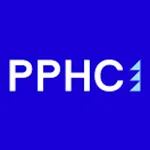|
|
I’ve authored many a column on PR firm profitability and what it takes to be a profitable agency. The benchmark in the industry has been 20 percent. I’ve always felt that 20 percent profitability leads to mediocrity.
Based on Gould Partners' PR agency report for 2016, profitability of the surveyed firms is 15.2 percent. Agencies under $3.0 million in revenue netted 14.3 percent, while firms up to $10 million netted 14.6 percent. Agencies up to $25 million netted 17.4 percent and those more than $25 million netted 18 percent. So much for the industry benchmark of 20 percent! The Canadian firms that participated in the Gould survey averaged an operating profit 23.4 percent.
In my view, the industry goal needs to be 33 percent. For many agencies, 20 percent is a push, let alone 33 percent. Nevertheless, the bar needs to be set at 33 percent. There’s a definite path that needs to be followed to obtain 33 percent. In the past, I’ve outlined the road to profitability. This month I will again give my views on this subject.
The building block to profitability
The most basic principle of profitability is to know what it will cost your agency to service a client. PR principals ask this question for many purposes, including formulating overall strategies, service emphasis, and meeting reporting obligations.
The PR agency needs to understand the basic principles of job costing. When we think of job costing, a manufacturing company may come to mind. While this is often correct, the PR agency needs to know the cost of providing services to each client before the service is rendered, not after. Job costing is a system where costs are assigned to a distinct unit, batch, or product or service. The product or service is often custom made, such as providing unique services to a customer.
PR agencies provide customers with services or intangible products. Within the PR sector, jobs often differ considerably in terms of their length, complexity, and resources used. It’s critical for agencies to know their job cost for profitability analysis and pricing. Accurate cost information is especially important for PR agencies because competition can be fierce among agencies.
Here’s a homework assignment for you: look up Activity Based Costing for service industry firms and determine if this method of understanding the cost of providing services to customers should be considered by your agency.
Guaranteeing low profitability
Based upon the Gould reports, many agencies are experts in this area. So, what can cause low profitability in addition to not understanding the cost of providing services to your clients?
Low profitability is a direct result of not managing your engagements properly or knowing how to price the engagement. Either of these can result in always operating in crisis mode.
Fear of losing a client is next. Fear leads, in my view, to over servicing. If it’s not fear, please let me know why you over-service at your agency. I’m happy to publish your comments, a top ten list if you will.
Thinks about the last time you hired a contractor to work on your home. You arrived at a price and the contractor started work. An unforeseen event arose that required the contractor to make a change or do the job differently or you wanted a modification to the work to be completed. Did the contractor over service you? Or, did you learn two key words: “Change Order?”
The test of profitability
In my experience, smaller agencies (less than $2.0 million) generally have lower profitability for the reasons mentioned above. When I meet an agency that seems to have profitability issues, I review three basic factors (similar to a medical professional performing a basic examination).
The first test is the revenue per professional test. I generally multiply the total full-time employees (or its equivalent) by $200,000. I would expect to see a $2.0 million agency with ten professionals as having $200,000 for this benchmark. According to the Gould survey, revenue per professional was $211,995 for 2016. This is a key indicator of productivity of professional staff.
The second test is to divide revenue by billable hours (note: this is not part of the Gould survey). Smaller agencies are hard pressed to tell me how many billable hours are generated. I usually use 1,500 hours per professional or some other amount that agency management feels is appropriate. I would like to see an average billing rate of at least $185 per hour. In this case, the revenue for the agency should approximate $2.775 million not $2.0 million. Accordingly, the agency has failed to earn $775,000 of additional revenue. The real problem is when the test result comes up with $85 hour. This is not as uncommon as you would think among smaller agencies.
Labor cost is next on the list. According to the Gould survey, total labor cost is 58.9 percent, up from 58.5 percent. According to the survey, this is too high and an indication that salaries, bonuses and freelance labor have not been managed tightly. Model firms keep it as low as 50 percent. Frankly, I find it difficult for firms operating in key markets (New York City, Los Angeles, Chicago) to meet the 50 percent mark. In fact, in my experience, agencies with poor cash flow and profitability benchmark at 70 percent to 80 percent.
Therefore, if labor is 70 percent and operating overhead is approximately 26 percent, total cost is 96 percent. You can do the math.
***
Richard Goldstein is a partner at Buchbinder Tunick & Company LLP, New York, Certified Public Accountants.

 Richard Goldstein
Richard Goldstein
 Omnicom CEO John Wren reports Q1 revenues jumped 5.4 percent to $3.6M, powered by a solid 7.0 percent rise in its advertising & media segment.
Omnicom CEO John Wren reports Q1 revenues jumped 5.4 percent to $3.6M, powered by a solid 7.0 percent rise in its advertising & media segment. Public Policy Holding Company registered 24.1 percent growth to a record $135M during the past year, which included the results of the March 1 acquisition of Multistate Assocs.
Public Policy Holding Company registered 24.1 percent growth to a record $135M during the past year, which included the results of the March 1 acquisition of Multistate Assocs. Stagwell CEO Mark Penn reported Q4 net revenues dipped 5.6 percent to $551.1M during a “challenging year for marketing services and digital transformation.”
Stagwell CEO Mark Penn reported Q4 net revenues dipped 5.6 percent to $551.1M during a “challenging year for marketing services and digital transformation.” Why M&A activity in the PR and marketing sector could pick up in 2024.
Why M&A activity in the PR and marketing sector could pick up in 2024. WPP reported Q4 revenues inched ahead 0.3 percent to $4.1B as CEO Mark Read wrapped up a year that he said was more challenging than expected due to cutbacks, mainly by technology clients.
WPP reported Q4 revenues inched ahead 0.3 percent to $4.1B as CEO Mark Read wrapped up a year that he said was more challenging than expected due to cutbacks, mainly by technology clients.


 Have a comment? Send it to
Have a comment? Send it to 
No comments have been submitted for this story yet.